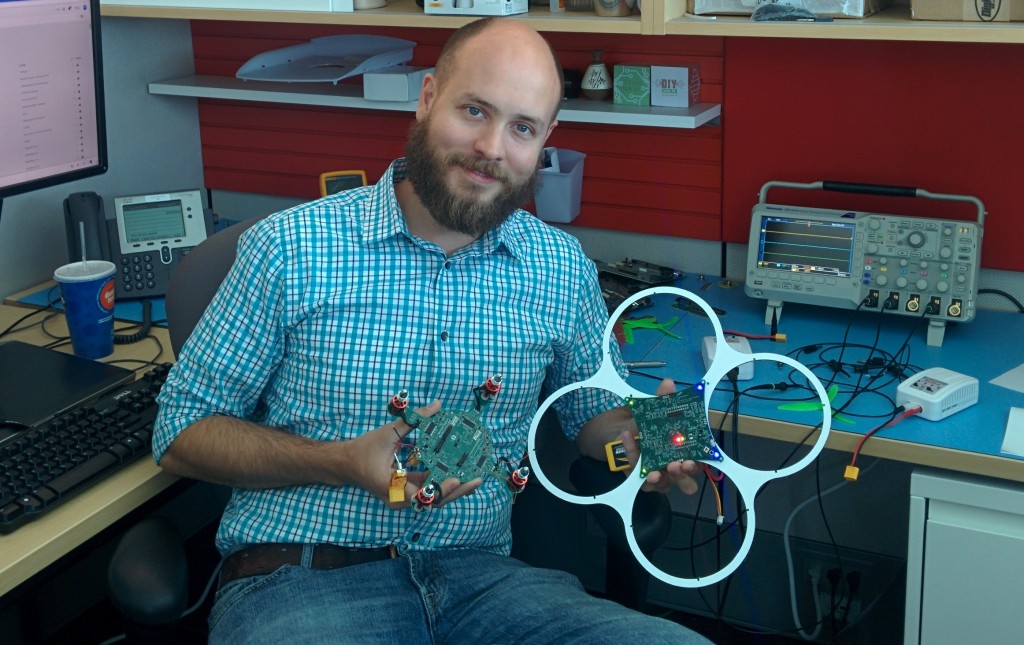Podcast: Play in new window | Download
Subscribe: Apple Podcasts | RSS
Welcome, Trey German! (@yertnamreg)
- Trey currently lives “inside the loop” in Houston, TX.
- He went to school at Rose Hulman, an engineering focused institution. He decided to attend after a summer camp where they built a holonomic robot.
- During school he was part of Rose Hulman Ventures. This introduced him to the company that gave him his first job, Simma Software.
- Simma designs protocols and stacks around CAN and J1708. These are used in large scale automotive applications.
- Trey designed a CAN bootloader which allows for reprogramming parts hanging off the CAN bus.
- After Simma, he was recruited by Texas Instruments to move down to Houston as part of the C2000.
- He had previously worked on Luminary Micro parts using the USB stack at Simma, so this was good preparation for porting that stack to C2000 (after TI bought Luminary Micro)
- The c2000 is a 32 bit processor with a built in DSP. This makes it good for applications with real time control and control loops.
- The memory address bus is 16 bits, which required defining new types during the USB port (messy!).
- USB does not need to run on an Real Time Operating System, though it can. They have a proprietary one called TIRTOS.
- lwip and microip are examples of ethernet stacks running without an RTOS as well.
- Trey announced his new position at TI: Launchpad applications manager! Congrats!
- The C2000 Launchpad (which Trey designed) uses Energia, the fork of the Arduino IDE. Energia supports TI parts and the Launchpad family.
- Energia was the rocket that carried a Russian clone of the Space Shuttle.
- The C2000 are used for high speed things like a switching regulator controller. The reconfigurable nature allows for efficiency improvements on existing devices in the field!
- They are also working on integrating PMBus (an i2c type of protocol for interfacing with switching supplies).
- The switching/digital power stuff runs at 100kHz+. The motors run more in the range of 10-50 kHz.
- The InstaSPIN software allows for monitoring and controlling motors without needing external sensors (also called Field Oriented Control).
- A Cleveland company known as Linestream works with TI on some of this software. Chris got to see a demo at the meetup he runs with Martin Lorton.
- The Clarke Transform and Park transform allow the math to simplify, by translating coordinates.
- A video by Dave Wilson really helps to clarify some of these points:
[tube]https://www.youtube.com/watch?v=cdiZUszYLiA[/tube] - There is also a wiki where the theory and application of motor control are discussed in depth.
- The code is interrupt driven (no RTOS or OS needed) because of the fast response time needed.
- There is also a small co-processor called the Control Law Accelerator. They recently released a C compiler for it.
- Trey is working on a quadcopter using instaspin and Launchpad. The body is being cut from die bond material.
- You can catch Trey at the upcoming NY (World) Maker Faire. You can also find him on Twitter at @yertnamreg.
- Online he hangs out at C2K Central, 43oh and the E2E forums on the TI website.
Many thanks to Trey for being on the show! We can’t wait to try out his new quadcopter design!


Finally, you guys go back to your roots and talk about electronics. This show was great, ton’s of electronics jargon peppered with just enough software talk to not lose me, it got my electrons flowing again.
I keep track of rotor/stator as (rotor = rotates (such as the outputshaft)) & (stator = stationary (such as the field windings))
..btw energia means energy in spanish.